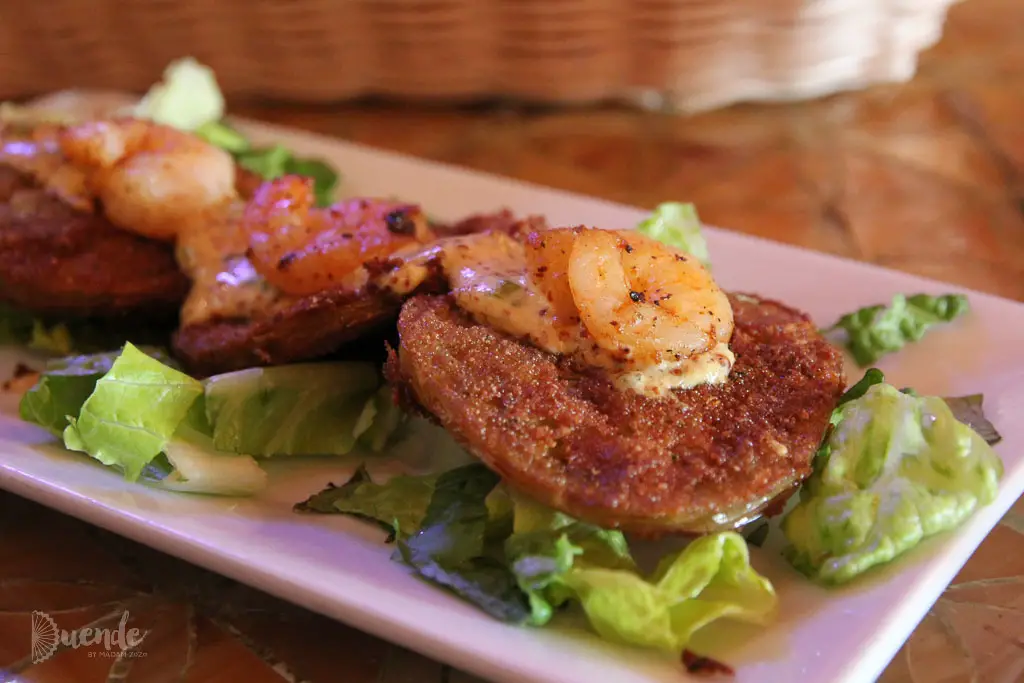If you’re a food lover looking to explore American cuisine, you’re in for a treat! From classic comfort foods to regional specialties, there are plenty of delicious dishes and desserts to try. Here are 11 must-try American foods that will tantalize your taste buds and leave you craving more.
Seven-years into our expat stint in the USA, I have thought a lot about the American foods we’ve discovered and loved through life and travel. I’ve reflected on the ingredients and dishes that have become part of our regular diet and those we indulge in whenever we go to a particular place where that food item is a specialty. Here are ten dishes that have tickled my foodie tastebuds.
Now I’m not going to waste your time with things like hamburgers or New York pizza. We all know what they are and have probably eaten them. Instead, here are some more unique and arguably better tasting, American foods to try.
Table of contents
All the BBQ!
Until moving to the U.S. I thought barbeque was barbeque, although different to what us Aussies call barbeque. Turns out its quite the regional cuisine, Tennessee, North Carolina, South Carolina, Kansas, Texas etc… they all do it a little bit differently and all claim to be the best of course. Honestly, they are all good.
Let’s start by defining the word “barbeque” as it is used in the USA. American barbeque can be thought of as a dish that requires specific preparation that is highly regional. The type and cut of meat (usually pork or beef), heat source (type of wood burnt), seasoning and/or condiments are all insinuated by the word “barbeque.”
In a general sense, it is meat cooked over a flame at low heat, very slowly–although sometimes smoking is conflated with barbeque. Some examples of regional BBQ styles include:
- North Carolina’s slow-cooked pork doused in a spicy vinegar-based sauce.
- South Carolina’s pork with mustard-based sauce.
- Central Texan beef bbq with a simple salt and pepper seasoning.
- Memphis BBQ using pork and a light, tomato-based sauce.
- Kansas City using a variety of meats with a dry rub and thick tomato and molasses-based sauce.
New England lobster roll
A lobster roll a day keeps the doctor away, at least that’s the philosophy we lived by while road tripping around New England one summer. During the 17th and 18th century lobsters were so abundant they were considered lower-class food – can you imagine? They were even fed to animals and used as fertiliser! During the 19th century, seafood came to be considered more of a delicacy and prices fluctuated with culinary trends and availability.
The exact origin of the lobster roll is debated but is firmly considered a New England dish. The original was served warm in a hotdog style bun with plenty of butter and is now known as a “Connecticut Lobster Roll”. The modern, “Maine-style” lobster roll substitutes mayonnaise for butter and is garnished with a mix of lemon juice, celery and spring onions. Unless you have a seafood allergy, I highly recommend you put this at the top of your list of foods to try in America.



Native American fry bread
Fry bread originated in a period where the US Government was attempting to force Native Americans to assimilate into Anglo-American society. They provided food rations to tribal members who refused to abandon their communities to take on individual farming. With these rations such as flour and lard, Native Americans created fry bread. It is usually eaten with toppings such as beans, meat, cheese, tomato and lettuce, or can be served alongside another dish.
Due to the unpleasant circumstances surrounding its origin, fry bread has different connotations for different Native peoples. Some have reappropriated the foodstuff as a symbol of their culture and history. Others do not make or eat it at all. As a traveller, you will most likely find fry bread served by food trucks and at restaurants often located on tribal land such as at Monument Valley.
Whoopie pies
Whoopie pies are a delicious treat that has conflicting origin stories. Various States across the Midwest and Northeast US all claim the whoopie’s origin. Don’t be decieved by the name “pie” though, it is a handheld dessert made of two cakes sandwiched together with a layer of frosting. It’s simple and delicious! Traditionally it would have been chocolate cake with vanilla frosting, but contemporary versions comes in all sorts of flavours.
It’s most likely that whoopie pies originated with the Amish or Pennsylvanian Dutch in the early 20th-century–given the insular nature of these communities. Although some in the Maine area, claim it was adapted from a former dessert known as a “black moon”. There’s all sorts of stories and claims floating around. The most important thing to know is, you are going to love them!
Pumpkin pie
We arrived in the U.S. in autumn–prime pumpkin season. I was bewildered by the array of pumpkin flavoured everything on offer. In Australia, pumpkins are strictly considered a savoury vegetable, preferably served baked alongside your Sunday roast or as a creamy soup, but never as a sweet dish.
Pumpkins have been cultivated in the Americas for thousands of years and the first European explorers took them back to The Continent. In England, where pies have a long tradition, pumpkins provided a novel filling. This concept likely travelled to North America with the first colonists from England and by 1654 they pumpkin pies were mentioned in the diary of a New England ship captain, Edward Johnson.
While my first pumpkin-spiced latte was a bitter disappointment – #Aussiecoffeesnob – my first pumpkin pie was amazing! My husband was more hesitant to try them, but has since been fully converted. Trust me, and try it!
Southern low country boil
Low Country Boil, otherwise known as Frogmore Stew and Beaufort Boil, is a classic South Carolina meal. This one-pot wonder usually consists of fresh, locally-caught shellfish, corn on the cob, potatoes and spicy sausage, spiced and boiled. This dish is the very picture of a summer beach picnic, often served humbly on paper plates or a newspaper-covered picnic table and devoured using the hands.
My hubby and I tried our first Low Country Boils in Savannah, a river’s breadth away from its native State. It is a messy, hands-on experience and completely worth it. I can’t wait to cook this one up for my sea-foodie friends in Australia!
Key lime pie
If you ever travel to Florida, and even more specifically, Key West, then you are bound to run upon some key lime pie. As the name suggests this tangy tart is made from key limes (or at least it used to be), combined with condensed milk and egg yolks, baked inside a crust. Sometimes it is topped with a whip of meringue or cream.
The origins of key lime pie are difficult to trace. There was no written recipe until the 1930s, but it is likely Key West locals were making it before that.
Note that key limes, a variety of limes introduced from Malaysia, were once grown quite prevantly in southern Florida. However, they were all but wiped out by a hurricane and replanted with Persian limes.
New England hash
I pass on most American breakfasts as they are far too sweet or worse. I fully reject biscuits and gravy (aka vomit on a plate) and fried chicken and waffles (waffles are for dessert, served with ice cream IMO). However, the humble hash is one dish to note and is worth trying a few times because it comes in many variaties.
The classic American corned beef hash, began as a breakfast that made use of leftovers. It originated in the New England region and generally consisted of beef, potato, cabbage and onion remnants from a boiled dinner. These ingredients are fried in a cast-iron skillet and topped with freshly cooked eggs to create a hearty breakfast and excellent hangover tonic.
A contemporary hash has many incarnations only limited by the creativity of the chef and ingredients at hand. You can find a simple formula for creating your own hash here.
San Francisco’s cioppino
Cioppino (pronounced: chee-oh-pee-no) is a delicious, tomato-based seafood stew. This American dish originated in the North Beach area of San Francisco, where Italian immigrants were working as fishermen. Initially it was made at sea or in private homes, using the leftovers from the day’s catch. With increased popularity, it migrated to dockside restaurants.
Crab, prawns, mussels, scallops, clams, fish… whatever was on hand, was combined with tomatoes, onion, garlic, herbs, olive oil and a splash of wine. The warming dish is served with bread to mop up all those glorious juices. San Francisco restaurants that local’s rate for their quality Cioppino include: Sotto Mare, California Fish Market, The Clam House, Alioto’s Restaurant, Scoma’s, Fog Harbor Fish House and Anchor Oyster Bar.



New Orleans jambalaya
Jambalaya can be thought of as the Southern United States’ adaption of the Spanish paella. The rice-based, creole dish originated in the urban environment of New Orleans. The ingredients usually include a andouille sausage with another meat or seafood. This American dish starts with the “holy trinity” of Louisianian food: bell peppers, celery and onion, along with carrots, garlic, chillies and tomatoes. Once the meat and vegetables are browned and sauteed, a rich stock is added with rice and seasonings.
I tried jambalaya on my first visit to New Orleans and never looked back. It’s not common to find it outside Louisiana–heaven knows why everyone isn’t eating it! But that exclusivity does make you enjoy it all the more while your there. There’s some pretty easy-to-follow recipes around the internet, although they generally involve a long list of ingredients.
Boston cream pie
It’s time for another dessert! The Boston cream pie, as the name might suggest, combesfrom Boston, Massachusetts. Chef M. Sanzian created this dessert while working at Boston’s Parker House Hotel in 1856. The cake was based on existing desserts known as “American pudding-cake pie” or “Washington Pie.” More of a cake than a pie, Sanzian’s version was involved two layers of sponge cke sandwiching a layer of custard and brushed with a rum syrup. It was then covered with more custard and topped with chocolate fondant. Don’t miss trying this American dessert at Mike’s Pastry in Boston.
Bonus: Fried green tomatoes
Ok, I know we’ve it 11 American foods to try already, but I have one more that I wasn’t sure whethter to include: fried green tomatoes. Battered, fried until golden, unripe tomatoes might conjure images of The South. That’s largely thanks to the 1987 novel by Fanni Flagg and subsequent 1992 Hollywood movie.
However, fried green tomatoes were likely introduced to the US by Jewish immigrants and first appeared in cookbooks across the Northeast and Midwest of the country. The first, known, published recipe was in a Chicago newspaper in 1877. Their popularity wore off after WWII and they only lingered in the Midwest… Until the movie.
I blame this much-loved film for my very high expectations when it comes to fried green tomatoes (FGT). However, I am deeply saddened to report that despite ordering fried green tomatoes on almost every occasion they have been on the menu AND made them myself—I’m still not satisfied. Maybe I just need to let go of my preconceived notion and embrace them for what they are, but I’m convinced there is a perfect FGT out there. Therefore, I’m adding them here as a try-and-see.
Have you tried these American dishes? Are there any American foods you wish you could access in your home country? Let me know in the comments below.
Peace, love and inspiring travels,
Madam ZoZo

